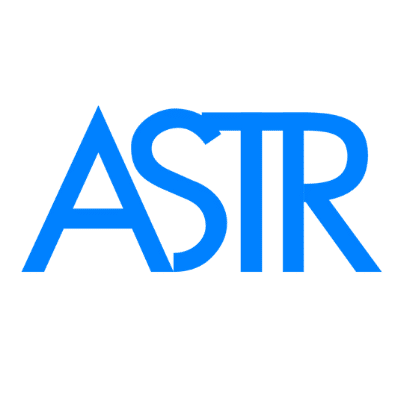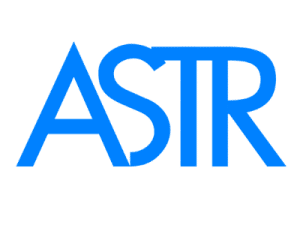Why the Paleo Diet Is Not Safe for Long-Term Health
Why the Paleo Diet Is Not Safe for Long-Term Health
The Paleo diet promises a return to the eating patterns of our hunter-gatherer ancestors—lots of meat, vegetables, fruit, nuts, and seeds, with strict avoidance of grains, legumes, dairy, and processed foods. While it may help some people eliminate common food triggers, the Paleo diet falls short as a long-term health solution.
In fact, many people on Paleo experience constipation, fatigue, inflammation, and nutrient imbalances after the initial “honeymoon phase.” This article reveals the hidden dangers of Paleo and why the ASTR Diet, developed by Dr. Joseph Jacobs, offers a safer, more complete healing approach.
What Is the Paleo Diet?
The Paleo diet focuses on whole foods that humans supposedly evolved to eat before agriculture. It allows:
-
Meat, poultry, fish
-
Eggs
-
Vegetables and fruit
-
Nuts and seeds
It strictly excludes:
-
Grains (even gluten-free)
-
Legumes (beans, lentils, peas)
-
Dairy
-
Processed foods and refined sugar
What’s the Problem with Paleo?
While the Paleo diet removes many inflammatory foods (like refined sugar and seed oils), it also eliminates important healing foods and fails to address environmental toxins, gut health, and hormonal balance—key factors in chronic disease.
1. It Lacks Gut-Supportive Fiber and Resistant Starch
By excluding legumes, oats, and many root vegetables, Paleo eliminates key prebiotic fibers that feed beneficial gut bacteria.
-
A low-fiber diet leads to gut dysbiosis, constipation, and increased intestinal permeability (leaky gut)
-
Fiber fermentation creates short-chain fatty acids like butyrate, which lower inflammation and support colon health
-
Long-term low fiber intake weakens immune function and increases chronic disease risk
📚 Sonnenburg & Bäckhed, 2016; De Filippo et al., 2010
2. It Can Be High in Inflammatory Saturated Fat and Animal Protein
Many Paleo followers rely heavily on red meat, bacon, and eggs for protein and fat.
-
Excess saturated fat and heme iron from red meat increase inflammation and oxidative stress
-
Cooking methods like grilling or frying can produce harmful compounds such as heterocyclic amines (HCAs)
-
Diets high in animal protein are linked to increased cancer risk, especially when fiber intake is low
📚 Mazidi et al., 2021; Pan et al., 2012
3. It Ignores Environmental Toxins
The Paleo diet focuses on which foods to eat, but not how those foods are raised, sourced, or packaged.
-
Conventionally raised meat may contain antibiotics, hormones, and pesticide residues
-
Non-organic produce and packaged “Paleo snacks” often contain hidden preservatives or plastic residues
-
These toxins disrupt hormones, damage the gut, and burden the liver
📚 Heindel et al., 2017; Muncke et al., 2020
4. It Fails to Address Hormonal Balance and Detoxification
The Paleo diet overlooks critical aspects of healing, such as:
-
Supporting liver detox pathways through cruciferous vegetables, bitter greens, and fasting
-
Balancing estrogen and cortisol with adaptogenic foods and fiber
-
Replenishing micronutrients that are lost through chronic stress or inflammation
Without these elements, chronic symptoms often return—even if you’re “eating clean.”
5. It’s Restrictive, Stressful, and Often Unsustainable
Many people struggle to stay on Paleo long term due to its restrictions on beans, rice, oats, and dairy-free substitutes. This can lead to:
-
Frustration, fatigue, and burnout
-
Nutrient deficiencies (including calcium, magnesium, folate, and B vitamins)
-
Disordered eating patterns and guilt around “non-Paleo” foods
A Safer Alternative: The ASTR Diet
The ASTR Diet, created by Dr. Joseph Jacobs and outlined in Eat to Heal, goes beyond trendy elimination plans. It is a science-backed, sustainable nutrition system that supports full-body healing by addressing inflammation, toxins, hormone imbalance, and gut dysfunction.
The ASTR Diet includes:
-
Anti-inflammatory, toxin-free foods that restore energy and reduce pain
-
Gut-repairing fiber, healing herbs, and detox support
-
Safe elimination of dairy, gluten, processed grains, sugar, and inflammatory oils
-
Personalized support from certified ASTR health coaches
-
Long-term flexibility and food freedom, with a strong foundation of real healing
Paleo vs. ASTR Diet: Key Differences
| Feature | Paleo Diet | ASTR Diet |
|---|---|---|
| Removes inflammatory foods | Yes | Yes |
| Gut healing support | Limited (low fiber) | High (rich in prebiotics and nutrients) |
| Detoxification support | Not addressed | Central to the plan |
| Toxin awareness | Not required | Required (organic, clean, hormone-free) |
| Hormone balance | Ignored | Prioritized |
| Long-term sustainability | Restrictive and difficult | Flexible and sustainable |
Stop Chasing Fads. Start Healing at the Root.
If you’ve tried Paleo but still deal with fatigue, bloating, flares, or brain fog, your body may be asking for more than just food elimination. The ASTR Diet offers a complete healing framework to support lasting results.
📘 Get started with Eat to Heal by Dr. Joseph Jacobs and receive your free ASTR Diet consultation to build a personalized plan.
👉 Schedule your free session now
References
-
De Filippo, C., et al. (2010). Diet and gut microbiota. PNAS, 107(33), 14691–14696. https://doi.org/10.1073/pnas.1005963107
-
Heindel, J. J., et al. (2017). Endocrine disruptors and chronic disease. Nature Reviews Endocrinology, 13(7), 421–434. https://doi.org/10.1038/nrendo.2017.51
-
Mazidi, M., et al. (2021). Saturated fat intake and inflammation. Nutrition, Metabolism and Cardiovascular Diseases, 31(3), 835–842. https://doi.org/10.1016/j.numecd.2020.11.008
-
Muncke, J., et al. (2020). Toxic migration from food contact materials. Journal of Epidemiology & Community Health, 74(6), 502–506. https://doi.org/10.1136/jech-2019-213084
-
Pan, A., et al. (2012). Red meat consumption and mortality. Archives of Internal Medicine, 172(7), 555–563. https://doi.org/10.1001/archinternmed.2011.2287
-
Sonnenburg, E. D., & Bäckhed, F. (2016). Diet–microbiota interactions. Cell Host & Microbe, 19(5), 579–589. https://doi.org/10.1016/j.chom.2016.04.010

